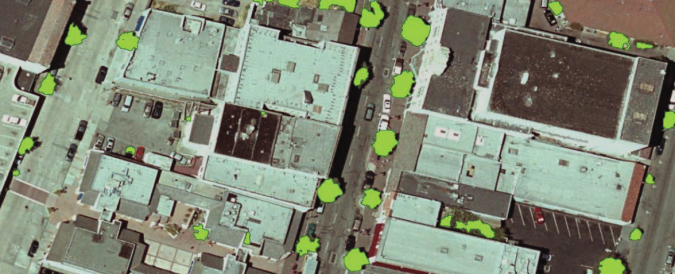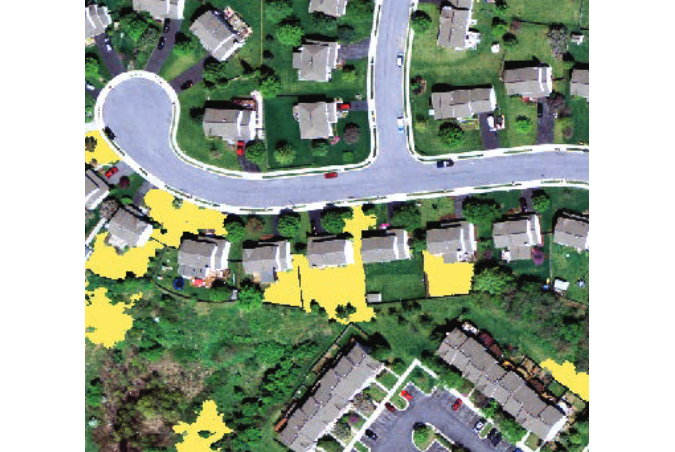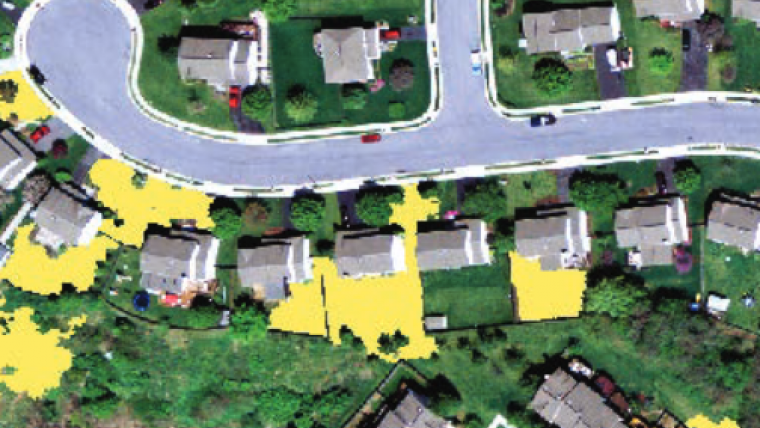Leveraging Deep Learning for Tree Inventory
A city council in Australia has used the ENVI Deep Learning module to analyse the 3D point cloud resulting from a leaf-on airborne Lidar survey, in preparation for a tree-planting initiative.
An Australian city council recently embarked on an ambitious tree-planting initiative to make its borders green. The objective was to enhance the natural environment as well as the health of its citizens. But an important question loomed: Where should the trees be planted to achieve maximum impact?
The answer to this question required an up-to-date inventory of existing trees in the city using a recent leaf-on airborne Lidar survey that contained the information they required. While the city had GIS experts, they had no capability to analyse the massive 3D point cloud.
The city purchased the ENVI image analysis package with the Deep Learning module from L3Harris Geospatial to automate key steps in the tree planting project. Specifically, they sought to leverage the software to count existing trees, differentiate them by height, and calculate canopy cover. These tasks would be extremely time consuming and likely inaccurate with manual techniques. And without any in-house expertise in Deep Learning, there was initial concern about taking on the project. However, once they saw the information the ENVI Deep Learning module could provide, they knew it would give them the information they needed.
The city is home to more than 200,000 residents and the municipality has a division that is responsible for the strategic management of parks, roads, bridges, footpaths, playgrounds and other infrastructure. The division is also responsible for maintaining the approximately 40,000 trees already growing on the city’s properties.
Unmapped trees
The value of trees for sequestration of CO2 is well documented, but less well appreciated are the benefits to human health. In this spot on the planet, summer temperatures easily soar above 40 degrees Celsius. Studies have discovered a direct correlation between tree canopy cover and ambulance calls for heat-related illness.
Neighborhoods with less shade from trees suffered more from the heat than those with dense overhead canopies. This information, coupled with the desire to increase overall biomass to aid in the fight against climate change, was a primary driver in the decision to plant more trees.
Prior to the initiative, the city had an accurate inventory of where trees were located on municipal property. However, thousands of additional unmapped trees grow on private property and on natural reserves owned by other government entities. The city had never tracked these trees because their management is the responsibility of the individual landowner, whether private citizen or governmental agency. And, it needed this information for the new project to be successful.
Another crucial component of the initiative was to encourage citizens to plant new trees in their yards. The municipality made seedlings available at no charge to participating landowners in neighborhoods where canopy cover was deemed sparse. However, the programme would only be efficient if the city knew what was already planted and where.

Teaching the computer to recognize trees
Deep learning is an artificial intelligence technology whereby the algorithm is ‘taught’ to identify certain features or conditions in digital imagery by their spatial, spectral and textural characteristics. For Lidar point clouds, the algorithm learns to detect and differentiate objects, such as trees, by 3D measurements.
The ENVI Deep Learning module was taught to recognize trees in the Lidar point cloud by annotating known examples of features that were and were not trees. From there, the algorithms processed the point clouds for the entire municipality, picking out thousands of individual trees in a matter of minutes.
Next, trees were segmented by the type of land where they were found, i.e., private property, city lands, other governmental reserves. The land use information came from cadaster layers in the city’s GIS. This gave the team important details about non-city-owned trees. In addition, automated filters were applied to the 3D point cloud to measure canopy cover and pinpoint trees above six metres in height.
The canopy information allowed the team to calculate overall tree canopy coverage as a percentage of land area in the city. The city is currently using this information to determine where new trees should be planted on city property and which neighborhoods should be invited to participate in the seedling give-away programme. Citizens are encouraged to plant a specific number of new trees based on their property size.
The tree height data is valuable as well. Trees taller than six metres are given a special designation due to the significant canopy coverage and shade they afford. It is proposed that these trees be protected under new city guidelines which means they can’t be removed, even from private property, without municipal permission.
More applications for deep learning
Based on its successful experience with ENVI Deep Learning for the tree inventory project, the municipality plans to apply it to wildfire prevention. The city has numerous relatively large vacant lots within its perimeter. Left uncleared of grass and dead branches, these can ignite fires that might spread in the summer heat.
With the power of ENVI Deep Learning, officials can train the models on what vacant land looks like from aerial photos which will then aid in the notification of landowners where overgrown grass is found.


Value staying current with geomatics?
Stay on the map with our expertly curated newsletters.
We provide educational insights, industry updates, and inspiring stories to help you learn, grow, and reach your full potential in your field. Don't miss out - subscribe today and ensure you're always informed, educated, and inspired.
Choose your newsletter(s)












